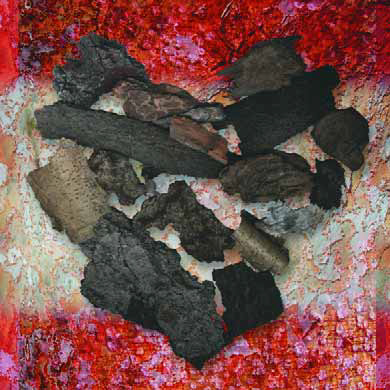column
Everywhere you turn these days, you see watershapers tackling projects that would have been unthinkable even a few years ago. It wasn't that long ago that simply raising a spa seemed like a big challenge, but these days vanishing edges, perimeter overflows and other ambitious details have become relatively common. And it's not just technology: Watershapers are gravitating toward great materials, colors, hardscape, plants and amenities - signs of real growth and, for the most part, a very good thing. With this broadening list of possibilities, however, have come some growing pains. The industry's like a teenager with
Please forgive me as I revisit themes from a couple of my past columns. One was written earlier this year on why we do what we do, while the other was published several years ago - back when I first began writing for WaterShapes - and was all about a subject dear to my heart: roses. Recent events in my family have given me time and the need to sort through the past, and the experience has deepened my appreciation of gardens, their emotional power and how they come to reflect our clients and ourselves. I'd like to share this process of discovery to define what I see as the essence of what we all try to do as professionals - and encourage all of you to
Value is measured and determined in a variety of ways. When it comes to pools and spas, for example, I'd say that the straight-dollar value is only one of several yardsticks and that, for many clients, it's no longer the one that tops their lists. Instead, beauty, health benefits, artistic merit, pride of ownership and emotional appeal are more important than price tag for many of them - a wonderful trend, to my way of thinking. These measures of value, of course, are highly subjective. Every client is a little bit different, and the relative value of non-monetary factors can be
Let me make an important point: As interesting as some of the details I discuss in these columns may be, many of the more significant ones wouldn't have any substance or value to my clients without the contributions of one very important person: my friend Mark Smith of Tarzana, Calif., whose firm takes care of my structural engineering. I'd go so far to say that he and his staff are critically important external members of my design team - professionals who know more than I will ever know about steel, concrete, tension and compression. Every single project I design and build is fully, individually engineered, and I refuse to make any assumptions on my own about what might be
Almost everyone I've talked to recently is busier than ever these days. And it's across the boards, from landscape architects and designers to pool and spa builders and subcontractors of every type: Everyone is swamped, and this year in particular they all seem to be having trouble just keeping up. The odd thing is that nobody I've spoken with has an entirely clear idea why this year is so busy. At best, the economy is mixed: oil and gas prices are through the roof, the stock market has been extremely inconsistent and consumer confidence has been shaky. Yet watershaping projects just seem to keep on rolling, no matter the news. One undeniable factor seems to be driving this demand - that is, the
It's a truism that almost all contemporary works of art are derivative: The ideas have already been expressed in one way or another at some point in history, and all we can succeed in doing is to apply those enduring forms as creatively as we can. We can't invent the wheel, but we can redraw it, embellish it, place it in context and, in our own ways, improve upon it through the choices we make in using it. To be effective in that sort of downstream effort as watershapers, it is essential that we understand the nature and origins of the basic building blocks of aquatic design. For years, people have asked me where I get my ideas - pools raised out of the ground, the small spillways, the drain details, the modular deck treatments, the color usage and the use of reflection, to name just a few. "Through my design education" is the short answer, of course, but I can get more specific if we
It'd be great if we all lived in a world where a handshake was sufficient to seal a deal and no legal documents were needed. Unfortunately, however, we live in a society in which contracts are a necessity for most of us in business. When I first started out, I took on jobs without signed contracts, and for the first few years I didn't run into any problems. As I moved into higher-dollar projects, however, I developed a quick appreciation for the value of a contract when a client refused to pay for my services as we'd verbally agreed he would. Although I realize there are people out there who run strong, successful businesses without a need for contracts and rarely run into problems, for most of us I believe it is a critical component of every job. The purpose of any contract is to
Most people I know enjoy being recognized for a job well done. From a simple pat on the back to the Nobel Prize, we get a sense of affirmation when our best efforts are seen and appreciated. Yes, there are those who see the work as its own reward. For most of us, however, recognition is a good thing, whether you prefer the warm-and-fuzzy side of being singled out for public praise or see the business advantage that comes along with recognition. Whether you're a film star brandishing an Oscar or a swimming pool contractor with an armload of design awards, there's an enhanced marketability that accrues to those with trophies on shelves and plaques on walls. For years, the pool/spa industry has






















